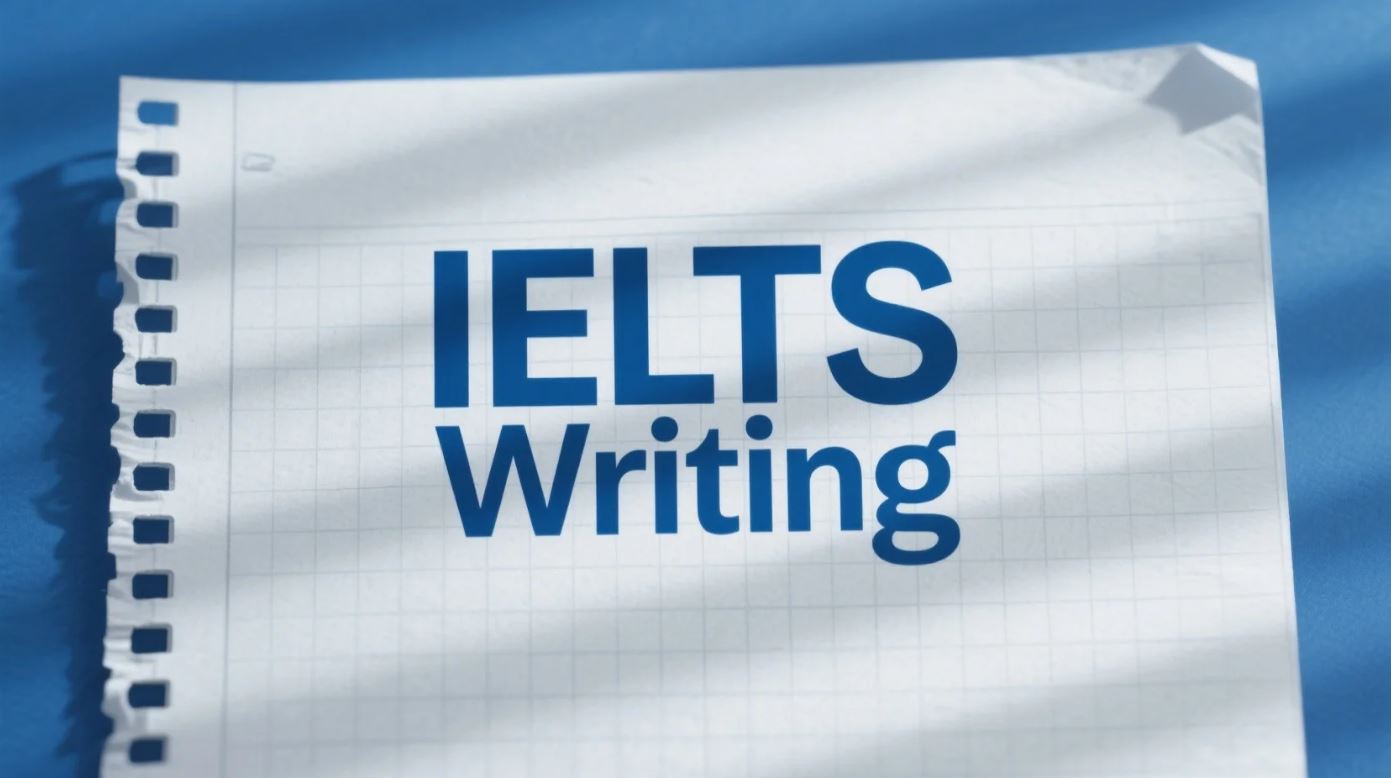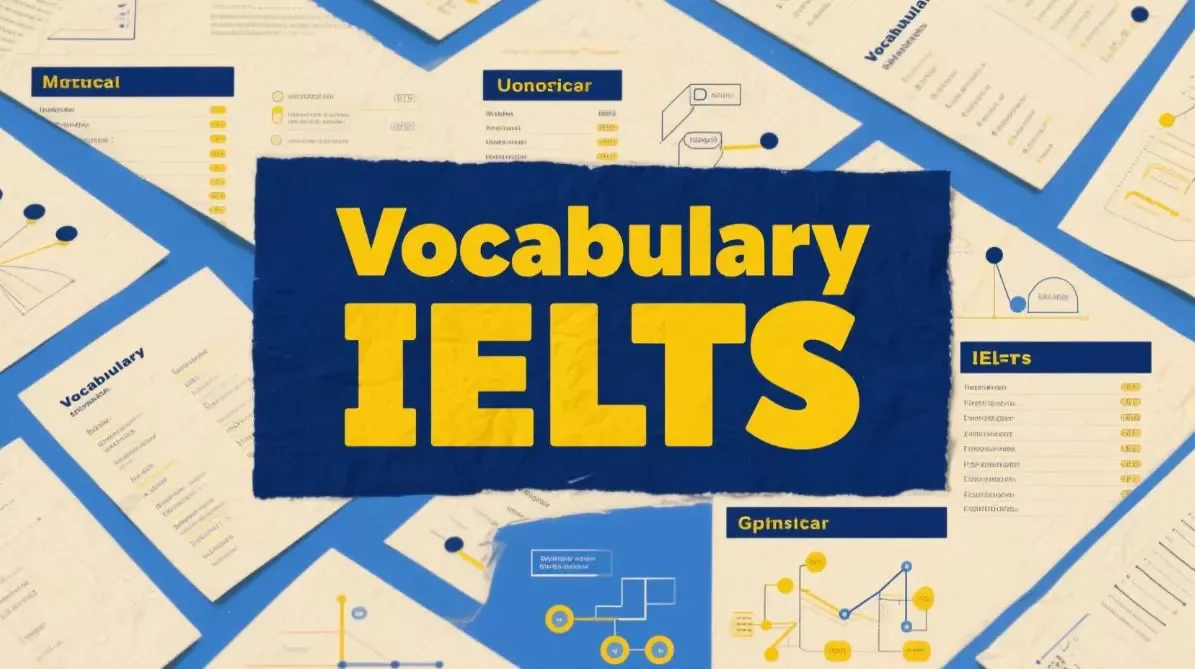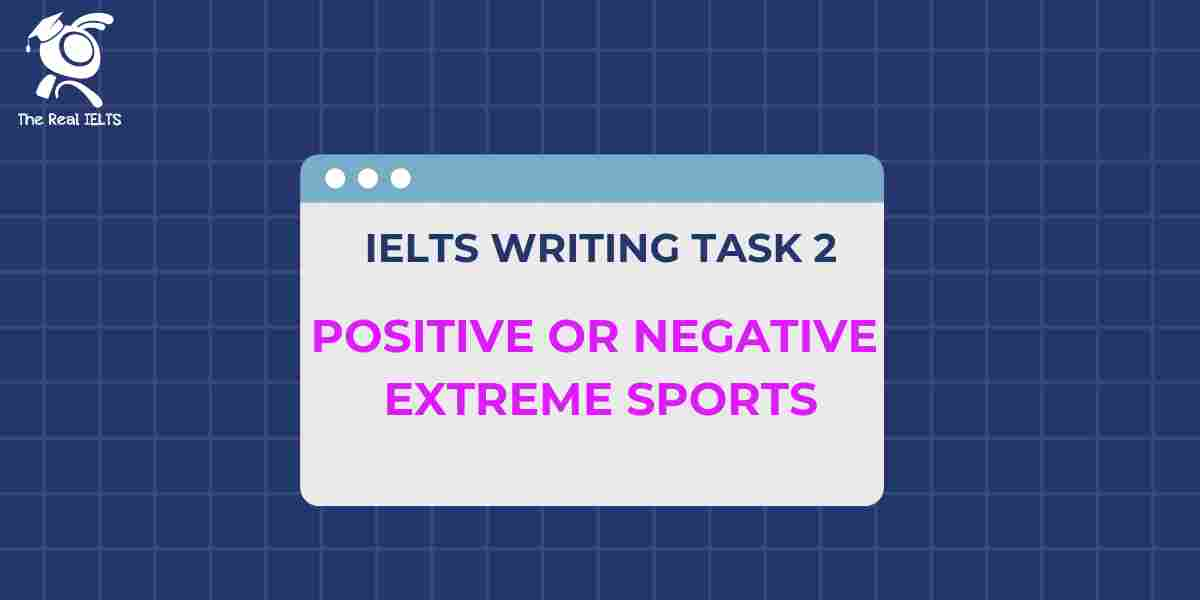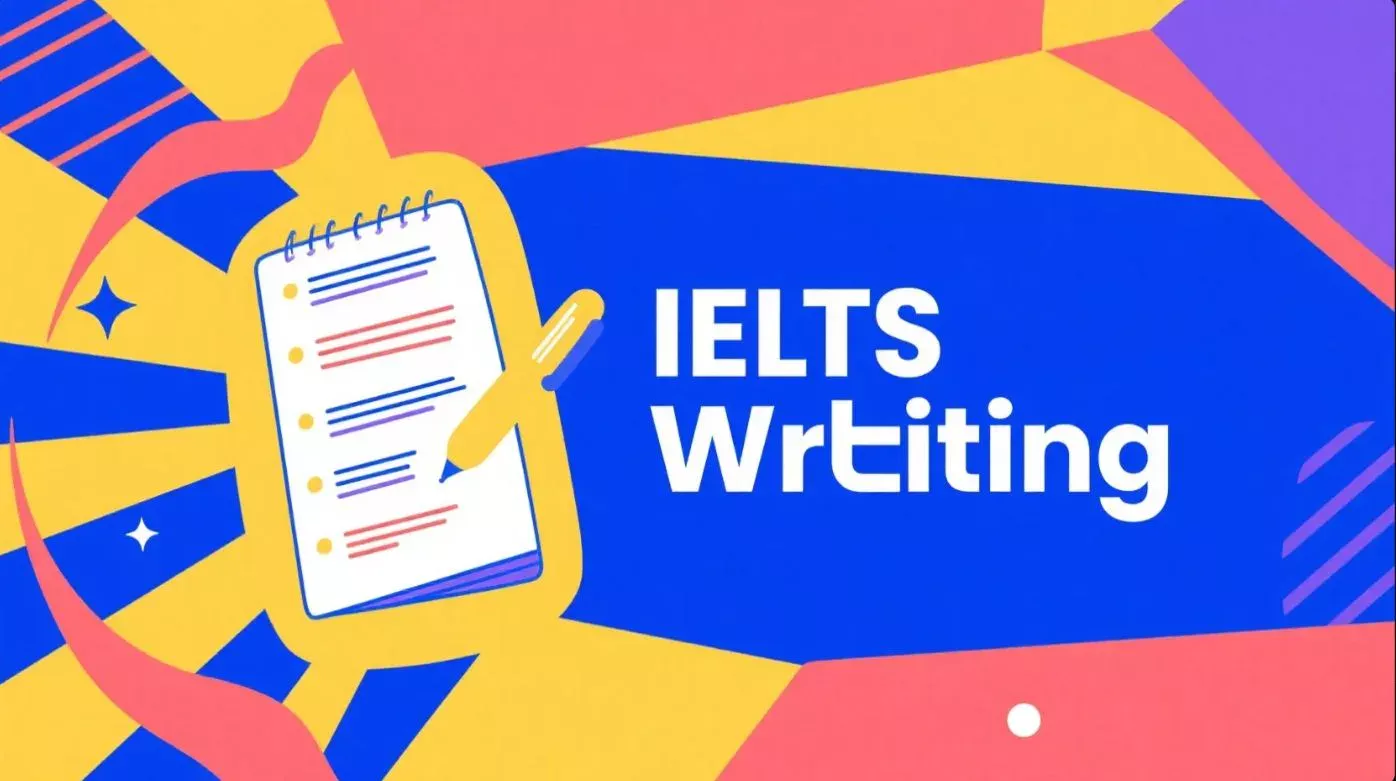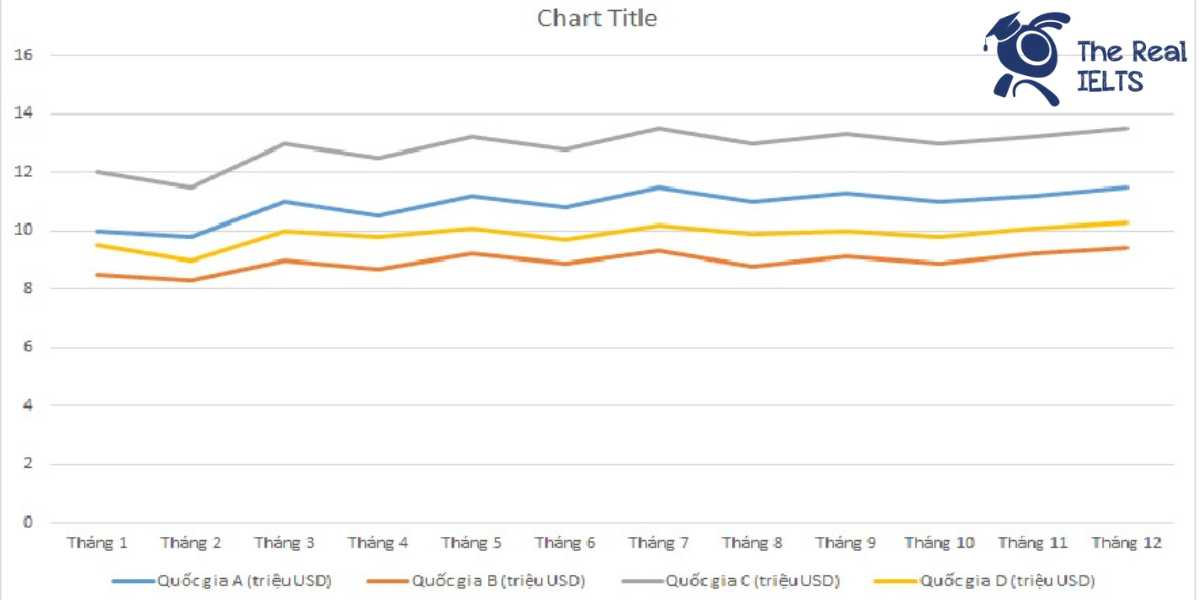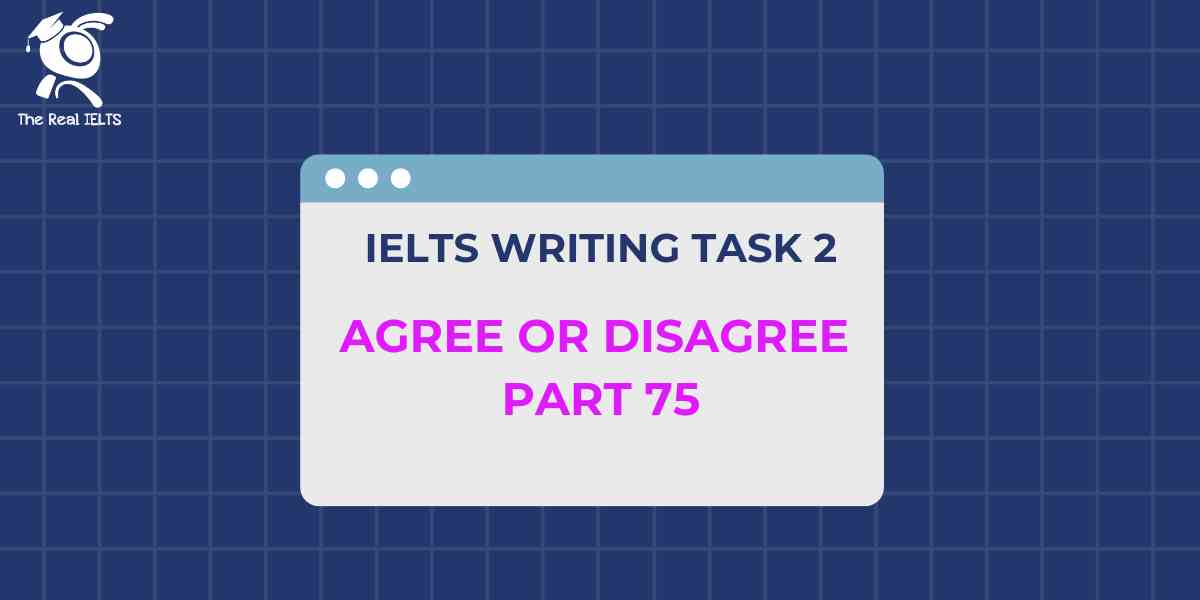Kỹ năng viết luôn là thử thách lớn đối với thí sinh IELTS, đặc biệt khi phải đáp ứng các tiêu chí khắt khe về ý tưởng, từ vựng và cấu trúc. Trong IELTS Writing Task 2 Phần 52, việc xây dựng luận điểm mạch lạc và sử dụng ngôn ngữ học thuật chính xác là yếu tố quyết định band điểm cao. Hiểu rõ yêu cầu đề bài và áp dụng chiến lược viết hiệu quả sẽ giúp người học chinh phục mục tiêu điểm số mong muốn.
Đọc thêm: IELTS Writing Task 2 Phần 51
Đề 1 IELTS Writing Task 2
Some people believe that the best way to improve public health is by increasing the number of sports facilities. Others, however, argue that this would have little effect and other measures are needed. Discuss both views and give your own opinion.
Bài essay (Band 6.5)
The issue of how to enhance public health has sparked considerable debate. While some advocate for building more sports facilities, others believe alternative solutions are more effective. This essay will discuss both perspectives before presenting my own view.
On the one hand, increasing sports facilities can encourage physical activity. Many people, especially in urban areas, lack access to gyms or parks, which discourages them from exercising. For instance, if a community has more football fields or swimming pools, residents are more likely to engage in regular exercise, thereby improving their fitness levels. Moreover, such facilities can foster a culture of sports, motivating younger generations to adopt healthier lifestyles. However, this approach may not benefit everyone, as some individuals may still lack the time or motivation to use these facilities.
On the other hand, opponents argue that public health requires broader measures. Education campaigns about healthy eating, for example, can address issues like obesity more directly. In many countries, poor diets are a leading cause of health problems, and sports facilities alone cannot solve this. Additionally, improving healthcare access, such as providing regular check-ups, can prevent diseases before they become serious. These measures are often more inclusive, benefiting people who may not be physically active.
In my opinion, while sports facilities are beneficial, they are not enough sufficient on their own. A combination of better facilities, health education, and improved healthcare is essential for comprehensive public health improvements. By addressing multiple aspects, governments can achieve better outcomes.
In conclusion, although sports facilities are valuable, other measures like education and healthcare are equally important. A holistic approach is necessary to ensure long-term health benefits.
Chấm điểm (4 tiêu chí)
Task Response: 6.5
The essay addresses both views and provides a clear opinion, with relevant ideas supported by examples. However, the arguments are somewhat general, and the discussion lacks deeper analysis or specific evidence, which limits it to a Band 6.5.
Coherence and Cohesion: 6.5
The essay is logically organized with clear paragraphs and appropriate use of linking words (e.g., “On the one hand,” “Moreover”). However, some transitions between ideas feel mechanical, and cohesion could be improved with more varied connectors or smoother idea progression.
Lexical Resource: 6.5
The vocabulary is appropriate, with some academic phrases (e.g., “foster a culture,” “comprehensive”). However, word choice is occasionally repetitive (“facilities,” “health”), and there is limited use of higher-level vocabulary that could elevate the score.
Grammatical Range and Accuracy: 6.5
The essay uses a range of sentence structures, including complex sentences. There are minor errors (e.g., “sufficient on their own” could be clearer), and some sentences are overly simple, preventing a higher score.
Phân tích từ vựng
- Foster a culture
- Nghĩa: Thúc đẩy/nuôi dưỡng một văn hóa.
- Giải thích: Cụm từ này được dùng trong văn học thuật để chỉ việc tạo ra một môi trường hoặc xu hướng lâu dài (e.g., “foster a culture of innovation”). Trong bài, nó được dùng để nói về việc khuyến khích lối sống lành mạnh thông qua thể thao.
- Lưu ý: Cụm từ này phù hợp Band 6–7, nhưng cần dùng chính xác ngữ cảnh.
- Comprehensive
- Nghĩa: Toàn diện, đầy đủ.
- Giải thích: Từ này thường xuất hiện trong văn nghị luận để mô tả một cách tiếp cận hoặc giải pháp bao quát nhiều khía cạnh (e.g., “a comprehensive strategy”). Trong bài, nó nhấn mạnh giải pháp đa dạng cho sức khỏe cộng đồng.
- Lưu ý: Từ này cần ngữ cảnh rõ ràng để tránh lạm dụng.
- Holistic approach
- Nghĩa: Cách tiếp cận toàn diện.
- Giải thích: Cụm từ học thuật, dùng để chỉ việc xem xét tất cả các yếu tố liên quan thay vì chỉ một phần (e.g., “a holistic approach to education”). Trong bài, nó được dùng để kết luận về giải pháp sức khỏe.
- Lưu ý: Phải giải thích rõ các yếu tố nào tạo nên “holistic” để tăng tính thuyết phục.
- Engage in
- Nghĩa: Tham gia vào.
- Giải thích: Cụm động từ này mang tính trang trọng, dùng để chỉ việc tham gia một hoạt động (e.g., “engage in discussions”). Trong bài, nó mô tả việc người dân tham gia tập thể dục.
- Lưu ý: Cần danh từ hoặc danh động từ theo sau (e.g., “engage in exercise”).
- Sufficient on their own
- Nghĩa: Đủ để tự đứng vững.
- Giải thích: Cụm này dùng để nhấn mạnh rằng một giải pháp không thể tự giải quyết vấn đề (e.g., “money is not sufficient on its own”). Trong bài, nó chỉ ra hạn chế của việc chỉ xây dựng cơ sở thể thao.
- Lưu ý: Cụm này hơi vụng về trong ngữ cảnh; có thể thay bằng “adequate alone” để rõ ràng hơn.
Phân tích ngữ pháp
- Complex sentences
- Giải thích: Bài viết sử dụng câu phức với các liên từ như “although,” “if,” và “while” (e.g., “Although sports facilities are valuable, other measures are equally important”). Đây là yêu cầu cho Band 6–7, giúp thể hiện lập luận đa chiều.
- Lưu ý: Một số câu phức hơi dài dòng, làm giảm sự rõ ràng. Cần cân bằng với câu đơn giản hơn.
- Modal verbs (e.g., “can,” “may”)
- Giải thích: Các động từ khuyết thiếu như “can” (e.g., “can encourage physical activity”) và “may” (e.g., “may not benefit everyone”) được dùng để diễn đạt khả năng hoặc dự đoán, phù hợp văn nghị luận.
- Lưu ý: Dùng đúng nhưng lặp lại nhiều, nên thay đổi bằng cụm như “likely to” hoặc “tend to” để tăng sự đa dạng.
- Passive voice (e.g., “are needed”)
- Giải thích: Câu bị động được dùng đúng trong “other measures are needed,” nhấn mạnh hành động hơn chủ thể. Đây là cấu trúc học thuật, phù hợp Band 6–7.
- Lưu ý: Dùng ít, nên kết hợp với chủ động để bài viết sinh động hơn.
- Article errors (potential issue)
- Giải thích: Bài viết không có lỗi rõ ràng về mạo từ, nhưng cụm như “sufficient on their own” có thể gây nhầm lẫn nếu không rõ ngữ cảnh. Mạo từ (a/the) cần chính xác khi nói về khái niệm chung (e.g., “public health” không cần “the” trong bài).
- Lưu ý: Cần kiểm tra kỹ để tránh lỗi nhỏ như “the public health” hoặc thiếu mạo từ.
Tổng kết & gợi ý cải thiện
Tổng quan: Bài viết đạt Band 6.5 nhờ cấu trúc rõ ràng, lập luận phù hợp, và từ vựng học thuật vừa phải. Tuy nhiên, các ý chưa được phát triển sâu, từ vựng và ngữ pháp còn lặp lại, và một số cụm từ thiếu sự tinh tế, làm hạn chế điểm số.
Gợi ý cải thiện để đạt Band 7:
- Phát triển ý sâu hơn: Thêm ví dụ cụ thể (e.g., số liệu hoặc nghiên cứu về tác động của thể thao/ăn uống) để tăng tính thuyết phục.
- Đa dạng từ vựng: Sử dụng từ đồng nghĩa (e.g., thay “facilities” bằng “infrastructure”) và cụm Band 7 như “mitigate health issues” hoặc “long-term sustainability.”
- Cải thiện cohesion: Dùng các cụm chuyển ý mượt mà hơn (e.g., “In addition to this” thay vì lặp “Moreover”).
- Tăng độ phức tạp ngữ pháp: Kết hợp câu điều kiện (e.g., “If governments invested more, health outcomes would improve”) hoặc đảo ngữ (e.g., “Not only do facilities help, but education does too”) để thể hiện sự tinh tế.
- Tránh lặp từ: Giảm lặp từ như “health” bằng cách dùng “well-being” hoặc “fitness.”
Đề 2 IELTS Writing Task 2
Some people believe that governments should spend more money on public transportation to reduce traffic congestion and pollution. Others argue that individuals should take responsibility for reducing their own carbon footprint. Discuss both views and give your own opinion.
Bài essay (Band 6.5)
In recent years, traffic congestion and pollution have become serious problems in many cities. Some people think that governments should invest more in public transportation, while others believe individuals should reduce their own carbon footprint. This essay will discuss both perspectives and provide my opinion.
On the one hand, supporters of government investment argue that public transportation is an effective solution to traffic and pollution issues. Well-funded systems, such as buses and trains, can carry many passengers, reducing the number of private cars on roads. For example, cities like Tokyo have efficient train networks, which help alleviate congestion and lower emissions. Moreover, public transport is often cheaper for citizens, encouraging them to use it instead of driving. Therefore, government spending in this area can have a significant impact on environmental problems.
On the other hand, some people believe individuals should take responsibility for their carbon footprint. They argue that personal actions, such as cycling, walking, or using electric cars, can contribute to cleaner cities. For instance, if more people choose to cycle to work, it could substantially reduce air pollution. However, this view assumes that everyone has the ability or resources to make such changes, which may not always be true, especially in developing countries.
In my opinion, both sides have valid points, but I believe governments should take the lead by improving public transportation. This approach is more practical and can benefit a larger number of people. Individuals can still contribute, but systemic changes driven by governments are more likely to bring about lasting solutions.
In conclusion, while personal responsibility is important, government investment in public transport is a more effective way to tackle congestion and pollution. A combined effort from both sides would be ideal.
Chấm điểm (4 tiêu chí)
Task Response: 6.5
The essay addresses both views and provides a clear opinion, with relevant ideas and examples. However, the discussion lacks depth in some areas, and the opinion could be developed further to show stronger critical thinking, which limits it to Band 6.5.
Coherence and Cohesion: 6.5
The essay is logically organized with clear paragraphs and linking words (e.g., “On the one hand,” “Moreover”). However—“Therefore” is slightly overused, and transitions between some ideas could be smoother, preventing a higher score.
Lexical Resource: 6.5
The vocabulary is appropriate with some academic phrases (e.g., effective solution, carbon footprint), but there is limited use of higher-level or varied vocabulary. Repetition of basic terms like “pollution” reduces the range.
Grammatical Range and Accuracy: 6.5
The essay uses a mix of simple and complex sentences, with mostly accurate grammar. However, minor errors (e.g., article misuse, verb tense consistency) and a lack of more advanced structures prevent a Band 7.
Phân tích từ vựng
- Effective solution
- Nghĩa: Giải pháp hiệu quả
- Giải thích: Cụm từ này được dùng để chỉ một cách giải quyết vấn đề mang lại kết quả tốt. Trong bài, nó được dùng để nhấn mạnh vai trò của giao thông công cộng trong việc giảm ùn tắc và ô nhiễm. Thích hợp trong văn học thuật để thể hiện tính thuyết phục.
- Alleviate congestion
- Nghĩa: Giảm ùn tắc
- Giải thích: “Alleviate” là động từ học thuật, nghĩa là làm giảm bớt một vấn đề. Kết hợp với “congestion” tạo thành cụm chuyên biệt trong chủ đề giao thông. Cụm này thể hiện khả năng dùng từ chính xác, nhưng cần lưu ý phát âm đúng /əˈliːviˌeɪt/.
- Significant impact
- Nghĩa: Ảnh hưởng lớn
- Giải thích: Cụm này thường dùng để nhấn mạnh mức độ ảnh hưởng của một hành động hoặc chính sách. Trong bài, nó được dùng để nói về tác động của đầu tư chính phủ. Cụm này phổ biến trong văn viết học thuật, nhưng cần tránh lặp lại quá nhiều.
- Carbon footprint
- Nghĩa: Dấu chân carbon (lượng khí thải carbon của một cá nhân)
- Giải thích: Thuật ngữ môi trường phổ biến, dùng để chỉ trách nhiệm cá nhân trong việc gây ô nhiễm. Trong bài, nó giúp tăng tính chuyên môn, nhưng cần kết hợp với các từ đồng nghĩa như “environmental impact” để tránh lặp từ.
- Substantially reduce
- Nghĩa: Giảm đáng kể
- Giải thích: “Substantially” là trạng từ học thuật, nhấn mạnh mức độ lớn của hành động. Kết hợp với “reduce” tạo cụm từ phù hợp khi nói về tác động tích cực. Cần chú ý dùng đúng ngữ cảnh, tránh nhầm với “slightly reduce”.
- Bring about
- Nghĩa: Mang lại, tạo ra
- Giải thích: Động từ ghép này được dùng để nói về việc tạo ra một thay đổi hoặc kết quả. Trong bài, nó nhấn mạnh vai trò của chính phủ trong việc tạo giải pháp lâu dài. Đây là cụm từ học thuật tốt, nhưng cần đảm bảo cấu trúc câu đi kèm chính xác.
Phân tích ngữ pháp
- Well-funded systems, such as buses and trains, can carry many passengers
- Giải thích: Câu này dùng cấu trúc phức với mệnh đề quan hệ “such as” và danh từ ghép “well-funded systems”. Cấu trúc này đúng và phù hợp với văn học thuật, giúp liệt kê ví dụ cụ thể. Tuy nhiên, cần đảm bảo danh từ số nhiều “systems” đi với động từ phù hợp (“carry”).
- This view assumes that everyone has the ability or resources
- Giải thích: Câu này sử dụng động từ “assumes” theo sau là mệnh đề “that”, thể hiện giả định. Cấu trúc này đúng, nhưng cụm “ability or resources” thiếu bài từ “the” trước “resources” (sai sót nhỏ: nên là “the ability or the resources”). Sai sót này phổ biến ở Band 6.5, làm giảm độ chính xác.
- If more people choose to cycle to work, it could substantially reduce air pollution
- Giải thích: Đây là câu điều kiện loại 1 (If + present, could + V), dùng để nói về khả năng thực tế. Cấu trúc đúng, nhưng “it” hơi mơ hồ (nên thay bằng “this” để chỉ rõ hành động đi xe đạp). Sự mơ hồ này là lỗi nhỏ, ảnh hưởng đến sự mạch lạc.
- Government spending in this area can have a significant impact
- Giải thích: Câu này dùng danh động từ “government spending” làm chủ ngữ, kết hợp với động từ tình thái “can”. Cấu trúc này đúng và học thuật, nhưng lặp lại “can” nhiều lần trong bài làm giảm sự đa dạng. Nên thay bằng “may” hoặc “is likely to” ở một số chỗ.
Tổng kết & gợi ý cải thiện
Tổng kết: Bài viết đạt Band 6.5 nhờ cấu trúc rõ ràng, lập luận đủ ý, và từ vựng phù hợp. Tuy nhiên, các lỗi nhỏ về ngữ pháp (thiếu mạo từ, đại từ mơ hồ), sự lặp từ, và thiếu chiều sâu trong lập luận ngăn bài đạt Band 7.
Gợi ý cải thiện để đạt Band 7:
- Sâu sắc hơn trong lập luận: Thêm ví dụ cụ thể hoặc phân tích tác động lâu dài của giao thông công cộng/cá nhân để tăng tính thuyết phục.
- Đa dạng từ vựng: Sử dụng từ đồng nghĩa (e.g., thay “pollution” bằng “environmental degradation”) và tránh lặp từ như “reduce”.
- Cải thiện ngữ pháp: Sử dụng đa dạng cấu trúc hơn (e.g., câu điều kiện loại 2, câu bị động nâng cao) và kiểm tra kỹ lỗi mạo từ, đại từ.
- Mạch lạc tốt hơn: Dùng từ nối đa dạng hơn (e.g., “In addition” thay “Moreover”) và đảm bảo mỗi ý liên kết chặt chẽ với ý trước.
Đề 3 IELTS Writing Task 2
Some people believe that governments should invest more in public transportation to reduce traffic congestion and pollution. Others argue that building more roads is a better solution. Discuss both views and give your opinion.
Bài essay (Band 6.5)
Traffic congestion and pollution are growing problems in many cities. Some argue that governments should prioritize public transportation, while others believe that constructing more roads is more effective. This essay will discuss both perspectives and present my opinion.
On one hand, investing in public transportation can significantly address environmental issues. Efficient systems like buses and trains reduce the number of private cars, leading to lower emissions. For example, cities with well-developed metro systems, such as Tokyo, experience less air pollution. Moreover, public transport is often more cost-effective for citizens, encouraging them to abandon their cars. However, building and maintaining these systems can be expensive and time-consuming.
On the other hand, constructing more roads is seen as a quicker solution to traffic problems. Wider roads can accommodate more vehicles, reducing congestion in busy areas. For instance, new highways often ease traffic flow in urban centers. However, this approach may not solve pollution, as more roads could encourage car use, leading to higher emissions. Additionally, road construction can harm the environment by destroying green spaces.
In my opinion, public transportation is the better long-term solution. While building roads offers immediate relief, it does not tackle the root causes of congestion and pollution. Public transport, though costly, promotes sustainability and benefits the majority.
In conclusion, while both solutions have merits, investing in public transportation is more effective for reducing congestion and pollution. Governments should focus on sustainable options to ensure cleaner cities.
Chấm điểm (4 tiêu chí)
Task Response: 6.5
The essay addresses both views and provides a clear opinion. Arguments are relevant, but some points (e.g., road construction’s environmental impact) lack depth. Examples are used but could be more specific to strengthen the response.
Coherence and Cohesion: 6.5
The essay is logically organized with clear paragraphs. Linking words like “moreover” and “however” are used appropriately, but transitions between ideas could be smoother. Some repetition of ideas reduces cohesion slightly.
Lexical Resource: 6.5
The vocabulary is varied and includes some academic terms (e.g., cost-effective, address environmental issues), but there is occasional overuse of general terms like “problems.” Word choice is mostly accurate, with minor errors.
Grammatical Range and Accuracy: 6.5
The essay uses a range of structures, including complex sentences, but there are minor errors (e.g., article misuse, verb tense inconsistency). Accuracy is generally good but not consistent enough for Band 7.
Phân tích từ vựng
- Public transportation
- Nghĩa: Giao thông công cộng
- Giải thích: Cụm từ học thuật dùng để chỉ các phương tiện như xe buýt, tàu điện, thường xuất hiện trong bài viết về môi trường hoặc đô thị. Trong bài, cụm này được dùng để thảo luận giải pháp giảm ùn tắc.
- Address environmental issues
- Nghĩa: Giải quyết các vấn đề môi trường
- Giải thích: Cụm từ trang trọng, phù hợp để mô tả hành động khắc phục vấn đề môi trường. Trong bài, nó nhấn mạnh lợi ích của giao thông công cộng.
- Cost-effective
- Nghĩa: Tiết kiệm chi phí
- Giải thích: Tính từ học thuật, thường dùng để so sánh hiệu quả kinh tế. Trong bài, nó mô tả lợi ích tài chính của giao thông công cộng cho người dân.
- Accommodate more vehicles
- Nghĩa: Chứa được nhiều phương tiện hơn
- Giải thích: Cụm động từ dùng để chỉ khả năng đáp ứng nhu cầu giao thông của đường bộ. Trong bài, nó được dùng để giải thích lợi ích của việc xây thêm đường.
- Tackle the root causes
- Nghĩa: Giải quyết nguyên nhân gốc rễ
- Giải thích: Cụm từ mang tính phân tích, thường dùng trong lập luận để nhấn mạnh cách tiếp cận triệt để. Trong bài, nó được dùng để ủng hộ giao thông công cộng.
Phân tích ngữ pháp
- Complex sentences (e.g., “While building roads offers immediate relief, it does not tackle the root causes…”)
- Giải thích: Câu phức với mệnh đề phụ thuộc (while) được dùng đúng để so sánh hai ý kiến. Tuy nhiên, bài viết có thể tăng số lượng câu phức để thể hiện sự đa dạng hơn.
- Article misuse (e.g., “road construction can harm environment” nên là “the environment”)
- Giải thích: Lỗi thiếu mạo từ “the” trước danh từ chung chỉ môi trường. Đây là lỗi nhỏ nhưng ảnh hưởng đến độ chính xác, thường gặp ở trình độ 6.5.
- Verb tense inconsistency (e.g., “new highways often ease traffic flow” và “could encourage car use”)
- Giải thích: Việc chuyển đổi giữa hiện tại đơn (ease) và cấu trúc giả định (could) là đúng nhưng thiếu nhất quán trong đoạn văn. Cần giữ giọng văn thống nhất khi thảo luận lợi ích và hạn chế.
Tổng kết & gợi ý cải thiện
The essay achieves a solid Band 6.5, with clear arguments and appropriate vocabulary. However, it falls short of Band 7 due to limited development of ideas, minor grammatical errors, and occasional lack of cohesion.
Gợi ý cải thiện:
- Task Response: Develop arguments with more specific examples (e.g., data about pollution reduction in cities with metro systems).
- Coherence: Use a wider range of cohesive devices (e.g., “in contrast,” “consequently”) and avoid repeating ideas.
- Lexical Resource: Incorporate more Band 7 vocabulary, such as “mitigate,” “exacerbate,” or “infrastructure.”
- Grammar: Reduce minor errors by proofreading for articles and tense consistency. Use more varied structures, like passive voice or conditional sentences.
Đề 4 IELTS Writing Task 2
Some people believe that the best way to reduce crime is to give longer prison sentences. Others, however, argue that there are better alternatives to tackle this problem. Discuss both views and give your own opinion.
Bài essay (Band 6.5)
It is often argued that extending prison sentences is the most effective method to decrease crime rates, while others believe alternative solutions are more beneficial. This essay will discuss both perspectives and explain why I support alternative approaches.
On the one hand, harsher penalties like longer jail terms can deter potential criminals. The fear of spending many years in prison may discourage individuals from committing crimes such as theft or violence. For example, countries with strict laws, like Singapore, often report lower crime rates, suggesting that severe punishments can be effective. Moreover, long sentences ensure that dangerous offenders are kept away from society, enhancing public safety. However, this approach may not address the root causes of criminal behavior, such as poverty or lack of education.
On the other hand, alternative methods, such as rehabilitation programs and education, can be more effective in reducing crime. By addressing underlying issues, rehabilitation helps offenders reintegrate into society. For instance, vocational training in prisons has been shown to reduce reoffending rates in many countries. Additionally, community service or counseling can prevent minor offenders from becoming habitual criminals. These methods are cost-effective and promote long-term solutions, unlike lengthy prison terms, which may lead to overcrowding and high costs.
In my opinion, while longer sentences may deter some crimes, alternative measures are more sustainable in tackling the causes of crime. Rehabilitation not only benefits offenders but also society as a whole.
In conclusion, although tougher sentences have some merits, alternative solutions like rehabilitation are more effective in reducing crime in the long run.
Chấm điểm (4 tiêu chí)
Task Response: 6.5
The essay addresses both views and provides a clear opinion, meeting the task requirements. However, the arguments lack depth, and examples (e.g., Singapore) are briefly mentioned without elaboration. To reach Band 7, more specific evidence and analysis are needed.
Coherence and Cohesion: 6.5
The essay is logically organized with clear paragraphing and basic linking words (e.g., “On the one hand,” “Moreover”). However, transitions between ideas are sometimes mechanical, and cohesion could be improved with more varied connectors. Band 7 requires smoother idea progression.
Lexical Resource: 6.5
The vocabulary is appropriate with some academic phrases (e.g., harsher penalties, cost-effective), but there is repetition (e.g., “crime” multiple times) and limited use of higher-level synonyms. Band 7 requires a wider range of precise vocabulary.
Grammatical Range and Accuracy: 6.5
The essay uses a mix of simple and complex sentences, with mostly accurate grammar. Minor errors (e.g., article misuse, word form) do not impede understanding but prevent a higher score. Band 7 requires more consistent accuracy and varied structures.
Phân tích từ vựng
- Harsher penalties
- Nghĩa: Hình phạt nghiêm khắc hơn
- Giải thích: Cụm từ này dùng để chỉ các hình phạt nặng hơn, như tù lâu hơn, trong ngữ cảnh thảo luận về luật pháp. Thích hợp trong bài viết học thuật khi nói về chính sách kiểm soát tội phạm.
- Ví dụ: “Harsher penalties may deter young people from breaking the law.”
- Severe punishments
- Nghĩa: Hình phạt nghiêm trọng
- Giải thích: Tương tự “harsher penalties,” nhưng nhấn mạnh mức độ nghiêm trọng. Thường dùng trong văn bản chính thức khi đề cập đến luật lệ.
- Ví dụ: “Severe punishments are enforced in some countries to maintain order.”
- Enhancing public safety
- Nghĩa: Tăng cường an toàn công cộng
- Giải thích: Cụm này dùng để chỉ các biện pháp bảo vệ cộng đồng, phù hợp khi thảo luận về lợi ích của chính sách. Mang tính học thuật và trang trọng.
- Ví dụ: “Locking up criminals is aimed at enhancing public safety.”
- Addressing underlying issues
- Nghĩa: Giải quyết các vấn đề gốc rễ
- Giải thích: Dùng để chỉ việc tập trung vào nguyên nhân sâu xa (như nghèo đói, giáo dục). Thường xuất hiện trong bài luận về giải pháp xã hội.
- Ví dụ: “Addressing underlying issues can prevent crime more effectively.”
- Cost-effective
- Nghĩa: Tiết kiệm chi phí
- Giải thích: Chỉ các giải pháp mang lại hiệu quả cao với chi phí thấp. Thích hợp trong ngữ cảnh so sánh các phương pháp.
- Ví dụ: “Community programs are more cost-effective than long prison sentences.”
- Sustainable
- Nghĩa: Bền vững
- Giải thích: Dùng để chỉ giải pháp lâu dài, hiệu quả trong thời gian dài. Phổ biến trong bài viết về môi trường hoặc xã hội.
- Ví dụ: “Sustainable policies are needed to reduce crime rates.”
Phân tích ngữ pháp
- Complex sentences
- Giải thích: Bài viết sử dụng câu phức (e.g., “By addressing underlying issues, rehabilitation helps offenders reintegrate into society”). Đây là điểm mạnh ở Band 6.5, nhưng số lượng câu phức còn hạn chế. Để đạt Band 7, cần đa dạng hơn (ví dụ, thêm câu có mệnh đề quan hệ hoặc câu điều kiện).
- Article misuse
- Giải thích: Có lỗi nhỏ về mạo từ, ví dụ: “the root causes” đúng, nhưng nếu viết thiếu “the” (e.g., “root causes of criminal behavior”), sẽ mất điểm. Cần chú ý mạo từ xác định/không xác định khi nói về khái niệm chung.
- Word form errors
- Giải thích: Một số từ có thể sai dạng, ví dụ: “reoffending rates” đúng, nhưng nếu viết “reoffend rates” thì sai. Lỗi này nhỏ nhưng ảnh hưởng đến Band 7. Cần kiểm tra dạng từ (danh từ, động từ, tính từ) trước khi viết.
- Linking words
- Giải thích: Bài sử dụng các từ nối cơ bản như “Moreover,” “However.” Tuy nhiên, lặp lại các từ này làm giảm tính linh hoạt. Để đạt Band 7, nên dùng thêm “In contrast,” “Consequently,” hoặc “As a result” để tăng sự đa dạng.
Tổng kết & gợi ý cải thiện
Tổng kết: Bài viết đạt Band 6.5 nhờ cấu trúc rõ ràng, từ vựng phù hợp, và lập luận cơ bản. Tuy nhiên, các hạn chế như thiếu ví dụ cụ thể, từ nối lặp lại, và lỗi ngữ pháp nhỏ (mạo từ, dạng từ) khiến bài chưa đạt Band 7. (Một số nhận xét mang tính ước lượng vì không thể mô phỏng chính xác chấm điểm như người thật.)
Gợi ý cải thiện:
- Task Response: Cung cấp ví dụ chi tiết hơn (e.g., số liệu hoặc nghiên cứu cụ thể về rehabilitation).
- Coherence and Cohesion: Sử dụng từ nối đa dạng hơn và cải thiện sự liên kết giữa các câu trong đoạn.
- Lexical Resource: Thay thế từ lặp (e.g., “crime” → “offenses,” “lawbreaking”) và dùng từ Band 7 như “mitigate,” “recidivism.”
- Grammatical Range and Accuracy: Tăng câu phức (e.g., câu điều kiện, mệnh đề quan hệ) và kiểm tra kỹ mạo từ/dạng từ.


